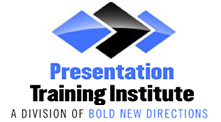The Do’s of Presenting
Know Your Audience
Take some time to figure out who you will be presenting to and learn as much as you can about them. It is important to understand things like age, demographics, professional experience, prior knowledge of your topic, and what they might want to learn. Knowing your audience helps you figure out what content will be most meaningful to them and it allows you to tailor your message to meet their specific needs.Â
Prepare for Your Presentation
It might sound obvious but preparation is key to delivering a successful presentation. Spend time focusing on the primary goal of your presentation, and then create an outline of your content. You may also want to prepare a slideshow to accompany your presentation. Adequately preparing content and visual aids takes time, so don’t wait until the last minute.Â
Have a Strong Opener
You only have a few minutes to make a good first impression so develop a strong opener that will capture your audience’s attention right away. Stay away from boring introductions and wow your audience with a shocking statistic, a meaningful quote, a thought-provoking question, or an interesting story.Â
Make Eye Contact
When you are presenting to an audience, you want to make eye contact with them. This creates a bond between the speaker and the audience and establishes a connection. When you look someone in the eye, they are more likely to listen to you and buy into your message. In addition, eye contact communicates confidence and credibility, both of which are important components of a successful presentation.Â
Pay Attention to Your Body Language
Communication involves much more than just the words we speak. Our body language is an important part of non-verbal communication, equally important as spoken word. The way a speaker moves, uses gestures, and holds their posture will determine how much the audience will trust them. Speakers can generate great emotion and interest through non-verbal communication and their body language plays a huge part in their overall stage presence. Therefore, command the stage by standing upright, moving around as you speak, using meaningful gestures with your hands, and using your eyes to display confidence.
Incorporate Meaningful Visuals
Visuals are an important tool in delivering a memorable presentation. For starters, visuals transmit information faster than spoken or written words, meaning you can deliver more information in less time by using visuals. Visuals also help your audience understand your message. In fact, 65% of people are visual learners, which means visuals are more likely to be an effective means of communication. Finally, visuals make a presentation more interesting. Powerful photography, an interesting video clip, or an informative graph is all more visually appealing to an audience.Â
The Don’ts of Presenting
Read from Your Slides
One of the worst things a presenter can do is to read verbatim from their slides. This makes you look unprepared and unprofessional. It also bores the audience to death, considering they can all read just fine on their own. Your slides are simply there to accompany what you are saying. So, remember that YOU are the main source of information, not your slides.Â
Talk Too Fast
Many people speak faster when they are nervous, but this can be detrimental to your presentation. Take a deep breath before you begin and focus on speaking at a steady speed to ensure the audience can clearly understand everything you are saying.Â
Use Filler Words
Another common occurrence when people get nervous is to insert filler words such as “um,†“uh,†and “so†into their speech. Oftentimes this occurs as the result of anxiety, and may even happen subconsciously. Therefore, rehearse several times in advance and pay attention to your use of filler words. When you feel one coming on, practice pausing and thinking in your head rather than using a filler word.Â
Fidget with Your Hands
Try your best not to fidget with your hands, as this is a common practice among nervous presenters. The audience will notice your body language and fidgeting will make you appear nervous and less credible. All that fidgeting can also be a huge distraction for your audience.Â
